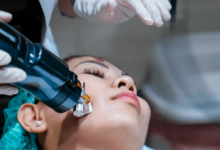Transforming Medical Concepts into Engaging Content

Medical concepts are usually presented in a text-heavy format. That means several pages of black and white text, complex sentences complete with medical jargon, statistics, diagrams, and tables.
Unless you’re in the medical field, this information can often be confusing. But that’s where engaging content such as motion graphics videos comes in.
How Can Medical Concepts be Translated into Compelling Visuals?
You might think that it’s impossible to turn a lot of data into something exciting, but with motion graphics videos they make the impossible possible! From simplifying complex concepts to showcasing the intricate details of a medical procedure, animations can engage audiences much better than any other form of marketing, making information easy to understand and more memorable, regardless of the platform. One way of doing this is through effective storytelling.
By crafting a narrative and translating medical concepts into clear, engaging visuals, animations make it possible for viewers to understand even the most complex medical concepts.
What Are the Key Considerations When Creating Medical Content?
For medical content to succeed, it needs to be created to the highest standard. However, there are some considerations that need to be considered when crafting content.
- Scientific Accuracy – working with medical professionals to ensure accuracy is important to ensure that the information is correct to avoid misinformation.
- Accessibility and Inclusivity – it’s important to make medical animations accessible to a variety of viewers, including those with impairments. This includes ensuring features like closed captions, audio descriptions and language localisation are considered.
- Regulatory Compliance – if you’re creating content for educational purposes then you need to take into consideration any rules or guidelines, such as those established by medical boards or local health authorities.
What Techniques Enhance the Clarity and Understanding of Medical Concepts?
There are many techniques that can enhance the clarity and understanding of medical concepts, including:
- Simplified Illustrations and Diagrams – when images and diagrams are simplified, it can help to break down complex information into digestible chunks making them easier for the audience to understand.
- Labels and Annotations – when layered over images and diagrams these could help to further clarify concepts and provide context so that viewers can better understand what’s happening.
- Colour Coding – different colours can be used to represent different concepts or processes, and this makes it easier for viewers to understand and differentiate.
- Infographics – by presenting key statistics and facts alongside graphics, infographics can help to improve understanding and retention of medical concepts.
- Interactive Elements – adding in interactive elements like buttons or sliders can enhance engagement and retention. Viewers can interact with medical concepts to explore and understand different parts of the concept, or to control the pace of information delivery. This can help cater to each individual’s learning style and preferences.
What Role Does Storytelling Play in Making Medical Content Engaging?
Storytelling is incredibly popular in medical content because it connects to people. When a story is told well, it connects with people on an emotional level meaning they retain information better. This is incredibly important for medical research as it allows researchers to convey their findings in a way that is easier for the audience to understand.
By telling a story about the research process, from the initial idea to final conclusion, motion graphics can contextualise data and provide a framework for understanding its significance.
But that’s not all. Storytelling creates a deeper, emotional connection with viewers, making them more curious and engaged – both which are super important for capturing and keeping their attention.
Through careful and crafted storytelling, motion graphics can communicate not only facts and figures, but also add context to what that research means in the real world.
How Do Motion Graphics Enhance the Presentation of Medical Information?
Motion Graphics are becoming increasingly important in the medical field as this method of information makes conveying complex information more accessible, easier to understand, and easier to retain when compared to more traditional methods.
For example, intricate physiological processes like the propagation of electrical impulses in the heart or the formation of blood clots can be easily shown through animated visuals, allowing viewers to easily understand these concepts with clarity and understanding.
Motion graphics also help to keep viewers entertained throughout the video. Techniques such as smooth transitions, text overlays, graphics, and visuals can all be placed throughout the video to emphasise key points and guide viewer attention. By doing this, it helps to keep viewers engaged, which helps to foster learning and information retention in a much better way than other methods of communication.
Last Thoughts
Medical concepts can be incredibly complex, and as the volume of research and new concepts increases, new ways of communicating to healthcare professionals and patients is more important than ever to ensure engagement and retention.
By leveraging the expertise of a motion graphics video company and combining it with a deep understanding of medical content, we can create visually stunning and scientifically accurate content that educates, inspires, and empowers audiences around the world.








